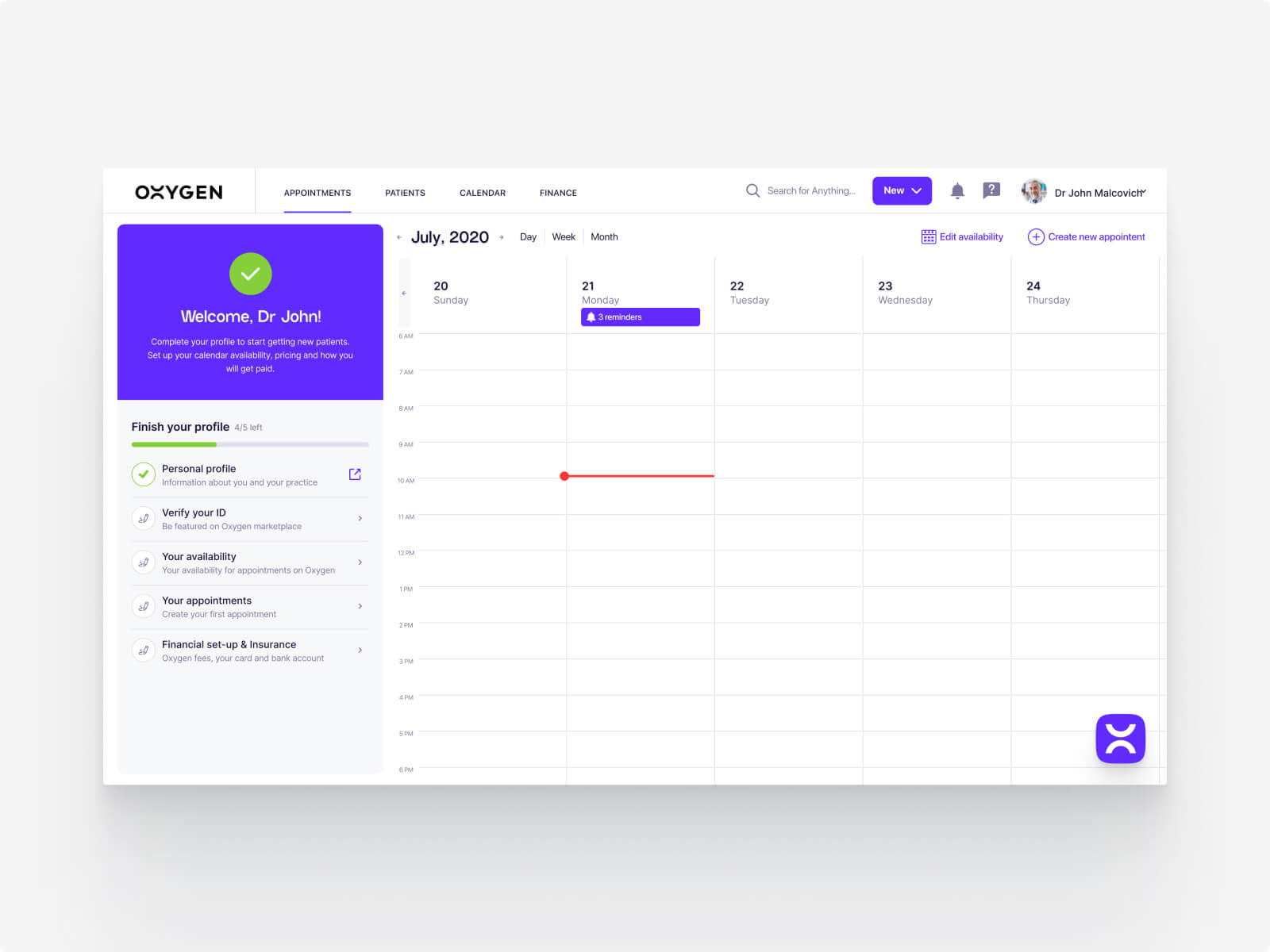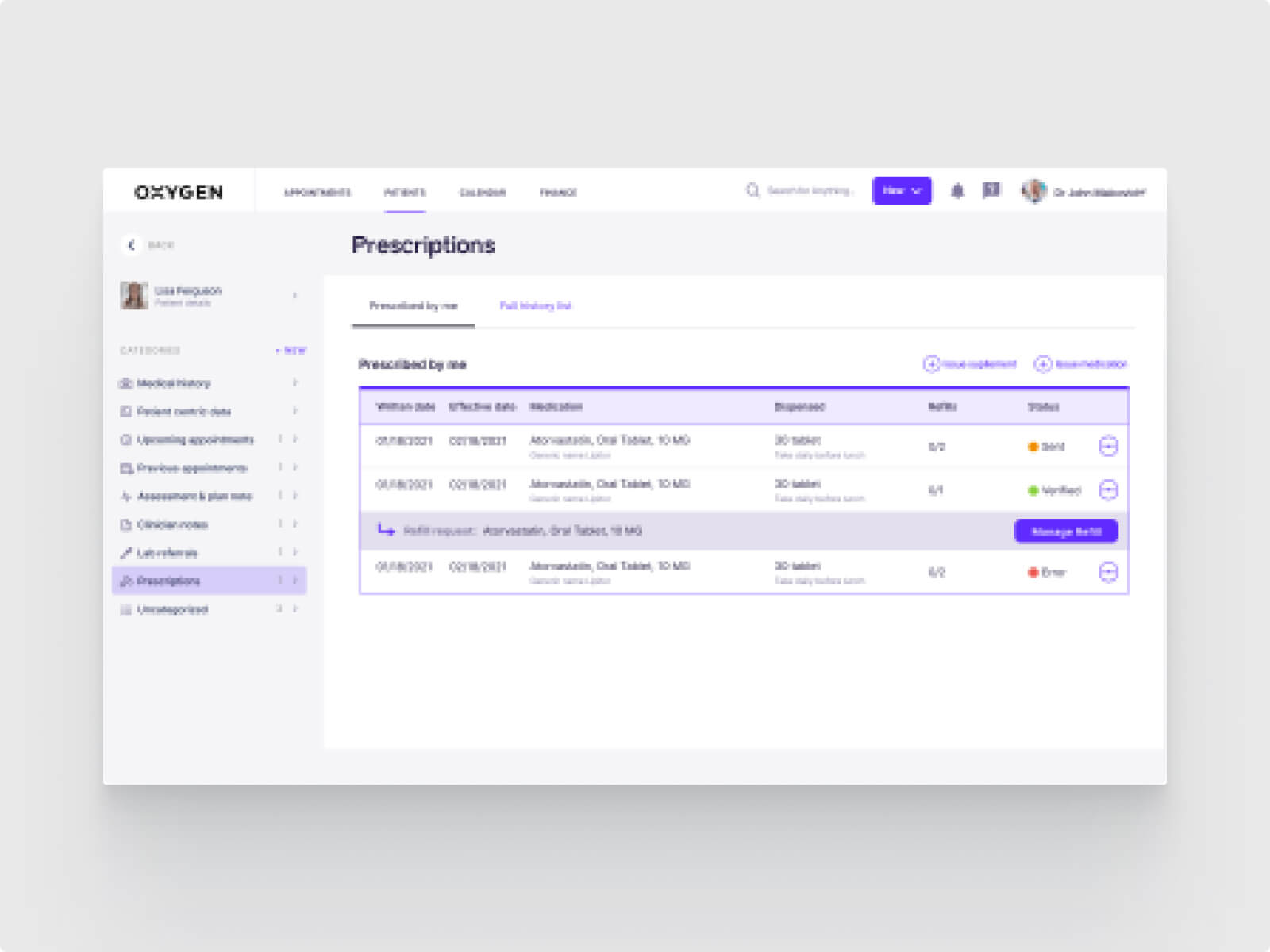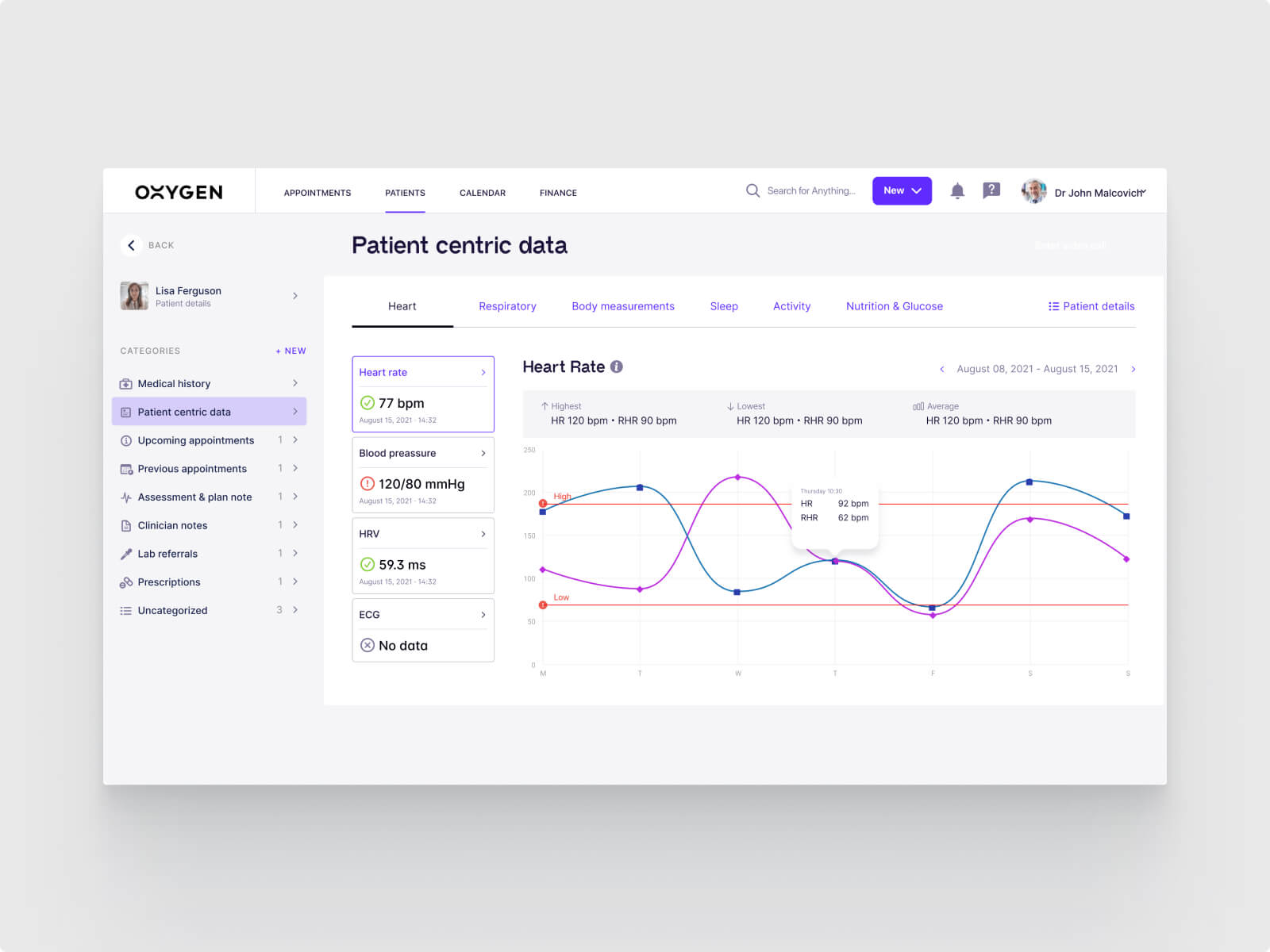Equipping Physicians with Cutting-Edge Tech Solutions
Oxygen Healthcare
SaaS Practice Management Web App UX UI design

Oxygen Healthcare transforms the telemedicine landscape by offering U.S. doctors and patients a cutting-edge platform for consultations, prescriptions, lab referrals, and claims management. The platform provides patients with urgent care, complete access to medical histories, and the convenience of scheduling through a virtual assistant, while ensuring compliance with U.S. healthcare standards.
Despite its innovative features, the initial platform faced significant challenges:
Doctors onboarding
The process was cumbersome and time-consuming, leading to adoption barriers.
Complex E/M coding workflows
Evaluation and Management (E/M) coding processes were unclear and inefficient for physicians.
Fragmented patient data
Accessing and annotating patient-centric data, including medical histories and IoT health metrics, was not streamlined.
The project aimed to:
Simplify and optimise the onboarding experience for doctors.
Enhance the usability of E/M coding workflows and ensure compliance with CPT standards.
Design a centralised patient data management system to improve annotation capabilities and access to medical histories.
Understanding the Users
After conducting extensive research and evaluations, the following key insights were derived from user feedback and analysis:
- Doctors prioritise a fast and straightforward onboarding process to minimise downtime.
- Clear, intuitive interfaces for E/M coding workflows significantly reduce errors and frustration during consultations.
- Centralising patient data with annotation capabilities improves efficiency and supports better care delivery.
User pain points
Physicians faced difficulties with onboarding, navigating complex coding workflows, and accessing patient data effectively.
What users needed
A streamlined and intuitive platform that facilitated onboarding, coding workflows, and patient data management while remaining compliant with healthcare regulations.
Research methods included:

Weekly usability testing
Collaborated with doctors in Los Angeles and New York to validate prototypes, gather feedback, and ensure compliance with regional healthcare regulations.

Competitive analysis
Benchmarked against leading telemedicine platforms to identify gaps and opportunities for differentiation.

Heuristic analysis
Evaluated the app using Jakob Nielsen’s 10 usability heuristics to identify areas of success and failure in usability.
Combining the Insights
Based on the research findings, we defined actionable strategies to address the platform’s challenges:
- Onboarding optimisation: Simplified the doctor registration process to reduce friction and encourage adoption.
- Streamlined workflows: Redesigned the E/M coding interface to improve usability and ensure compliance with CPT standards.
- Centralised data management: Created intuitive dashboards for patient records, integrating IoT metrics and annotation tools.
- Prototyping: Developed interactive prototypes to validate user flows and align designs with user expectations.
Design – Building the Solution
With a tight deadline, we prioritised actionable solutions to address user pain points and deliver a scalable design.
Onboarding
- Designed an intuitive onboarding process, guiding doctors step-by-step to set up profiles, verify credentials, and input availability with minimal friction.
- Created a progress tracker to visually indicate completion stages and pending actions, ensuring clarity and ease of navigation.
- Integrated insurance and payment setup seamlessly into the onboarding flow to facilitate quick marketplace activation.

Patient Data Management
- Designed a comprehensive patient overview screen to centralise medical history, lab results, prescriptions, and upcoming appointments in a single view.
- Introduced annotation capabilities for patient records, enabling doctors to make detailed notes directly within the platform.
- Created data visualisations for patient-centric data, such as IoT device metrics, to provide actionable insights and improve care delivery.

Other Functional Areas
- Appointments: Crafted a user-friendly calendar system to manage scheduling, cancellations, and rescheduling efficiently.
- Prescriptions: Designed a streamlined interface for issuing and managing prescriptions, ensuring clarity in medication details and refill requests.
- Additional Screens: Created interfaces for lab referrals, financial management, and claim processing, prioritising intuitive navigation and task efficiency.

Evaluation and Management (E/M) Coding
- Developed a streamlined interface for Evaluation and Management (E/M) coding, simplifying the process for selecting the appropriate CPT codes for patient visits.
- Incorporated tooltips and automated suggestions to reduce errors and improve coding accuracy, saving doctors time during consultations.
- Ensured compliance with US medical billing standards while maintaining a user-friendly interface.

Quantitative Outcomes
30%
Faster onboarding
Streamlined workflows reduced the time needed for doctors to start using the platform.
50%
Increase in usability scores
Redesigned interfaces improved satisfaction among doctors and patients.
!
High-value acquisition
The platform was sold to a leading medical company shortly after launch, demonstrating its commercial success.
Qualitative Feedback
Doctors:
“The onboarding is straightforward, and managing patient records is seamless.”
“The E/M coding workflows are intuitive and save time during consultations.”
Stakeholders:
Praised the platform’s compliance with healthcare standards and its alignment with business goals.
Business Outcomes:
– The designed platform attracted widespread adoption among physicians.
– The commercial sale validated the platform’s market value and usability improvements.
Key Takeaways
This project demonstrated the impact of user-centric design on healthcare technology. By addressing critical pain points through competitive analysis, heuristic evaluations, and validated prototypes, we delivered a solution that enhanced user experience, streamlined workflows, and achieved measurable business success.





